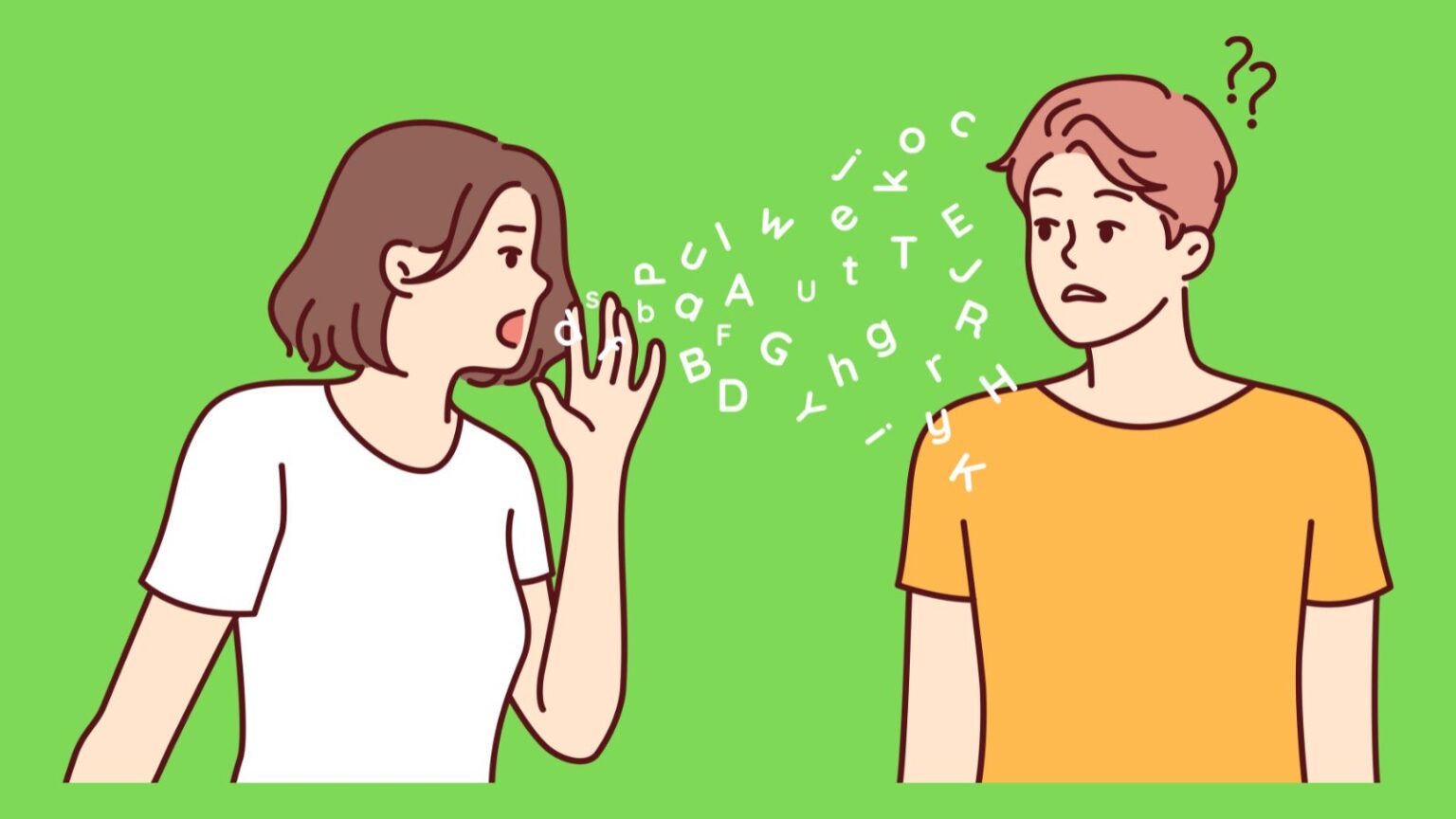Pronunciation ESL – Why It Should Be Top Priority
As a second language learner, I spent 20 weeks in ELICOS classrooms in two different institutions but out of those 400 hours, only a few were spent on explicit practicing of pronunciation. Moreover, those few lessons were arguably the least efficiently spent hours during my studies. At one point the teacher planned a lesson primarily focusing on intonation of multiple-syllable English words. He planned it thoroughly, I have to admit, from the pedagogical point of view. The lesson started out with a listening activity from a tape recording, there was a handout with cleverly constructed illustrations of the different pronunciation patterns which we worked on together as a whole class, followed by group work.
Even though it was a lesson with a firm focus on a particular content presented in an entertaining and engaging manner, I did not feel like I learned much during this lesson, nor did my classmates.
The reason is more linguistics than pedagogy related; we were practicing stress and intonation without any background knowledge about the way English phonemes, the schwa in particular, impact syllabic stress. There is a likelihood that the teacher was not aware of the fact that a second language learner would not really be able to produce the required stress pattern of the word “photographic” without the knowledge of the substitution of the schwa of the second and the fourth vowel. Similar and even worse attempts leave students finishing their courses without knowing much about English pronunciation.
Incorrect pronunciation means that our second language knowledge fails us when we need it the most: in real-life situations
That was certainly the situation in my case after I left school with a certificate stating that I was an advanced speaker, but I still could not understand ordinary native and non-native speakers nor could they always understand me. Living in an English speaking country, this was quite a big issue. To tackle this problem, I decided to improve my situation and because I consider myself as a lifelong learner with a great amount of self-directedness, I thought I could do it by myself with some help in the form of a suitable resource and lots of practice. The lack of willingness to practice was never an issue as I was really eager to improve, finding a good pronunciation resource, however, was almost an impossible mission.
Although my pronunciation improved in the beginning, most likely due to the fact that I paid special attention to it, I entered a stage where I was not only stagnating in this particular aspect of the target language, it also made my every-days harder. To communicate via emails with professionals from different domains or to compile a job application portfolio solely in English did not seem to be a hard task, however, meeting with people who I thought I needed to impress and attending job interviews were anxious encounters. It was not because I was lacking confidence in my knowledge or experience, I was suffering from second language anxiety, and it was down to one, probably the most important aspect of my second language: pronunciation.
There are many reasons why teachers try to avoid pronunciation teaching
Pronunciation is one of the hardest aspects of second language learning and arguably the most neglected by practitioners. There are practices which teachers try to incorporate but it mostly ends up being an encouragement for students to watch movies and TV shows and talk as much as they can in English to improve their spoken language skills. Some teachers’ practice is simply to follow the popular assumption, that being immersed in a target language environment will automatically improve the learner’s pronunciation skills.
This is not true, however. A study (Derwing & Munro, 2013) requested by the Canadian government, conducted over a seven- year period revealed that migrants who arrive in the country as adults are highly unlikely to improve their English pronunciation skills. This is even more striking in light of the fact that other aspects of their spoken language such as fluency and comprehensibility had improved over the years, according to research.
The most common reasons which make teachers avoid pronunciation teaching in classrooms:
1. Lack of linguistic knowledge
The lack of linguistic knowledge and most particularly about phonetics and phonology plays an important role here. In order to be able to teach the correct pronunciation of a complete phonetic inventory of a language, teachers need to have a good knowledge of it. It is foolish to assume that because someone is a native speaker of the language and thus can speak it correctly, can also teach it to other students who might have completely different ways of producing sounds.
2. Methodology
Another problem is the confusion about the good methodology. Some teachers try to work with the help of textbooks which are mainly built around the traditional listen and repeat model. The problem is that recent research (Carey, Sweeting & Mannell, 2015) states that the traditional listen and repeat model does not necessarily lead to success. This, in turn, means that teachers, who will not experience improvement in their learners’ pronunciation, might think that there is no right way to teach it and abandon the whole process.
3. Low confidence due to accentedness
This problem is mostly related to non-native speaker teachers of English, although native speakers with non-mainstream accents can develop similar attitudes toward pronunciation teaching. Even though these teachers might have the confidence and knowledge to stand in front of the class, to teach pronunciation explicitly can be a real challenge for them. It also has a lot to do with the fact that many of them will have a foreign accent which they might not feel confident about themselves. Focusing solely on pronunciation requires the teacher to produce sounds and intonation in front of the class and when they are not confident enough, they might rather avoid it altogether.
4. Preferred superiority of fluency over accuracy
The fact that teachers try to avoid pronunciation teaching is also due to factors which are not necessarily related to them. When second language learning was the privilege of a few people in the past and methods were based on native speaker models, pronunciation was a prominent aspect. The audio-lingual method was largely based on this notion. With the emergence of communicative language teaching practices, the main goal of the spoken aspect of the language shifted to fluency rather than correct pronunciation (Brandl, 2008). Teachers feel that trying to correct pronunciation during a lesson might hinder students’ improvement in fluency. While this can be true to some extent, we should not leave students to continue pronouncing sounds in a wrong way because it will cost them dearly in the future.
Teachers should take the initiative
There are resources that can make teachers become more prepared to tackle these issues, they only have to make time and effort to find them. I assume many teachers are already aware of some publishers who they rely on when they select their traditional language teaching resources, these will certainly have some textbooks dedicated to pronunciation teaching as well. It is important to look for recent or recently revised resources as the methodology behind second language pronunciation teaching has changed significantly over the last decade (Isaacs, 2013).
The basis of this is to develop the necessary knowledge about the technicalities of pronunciation and speech production to become confident in the topic. The fact that recent literature and scholarly research advocate methods which approach the topic from a first language perspective, means that non native speakers are not marginalized because of their accents: second language pronunciation is based on intelligibility rather than trying to sound like a native speaker.
Some practices teachers could implement in the classroom:
1.The first thing is to gain awareness
This does not mean that teachers who want to teach pronunciation have to become linguistic experts. The field of applied linguistics, however, provides us with knowledge that is easily transferable into a classroom setting. The most important thing is to be curious about the topic. There are many good informative videos on video sharing websites which explain how humans produce speech sounds with particular examples of how the tongue and the larynx are moving when we speak. Our knowledge does not have to be on a scientific level but awareness about some of these mechanisms help us to understand how we produce these sounds and then we can help others to do similarly.
2. Student friendly methods
From the pedagogical point of view, it is important that we realize that whether we are native or non native speakers, students do not have to produce the same sounds as we do. First language approach allows teachers to build on the native language of the students and identify what can be done to make them become confident and intelligible speakers of English. Some experts of the field (Underhill, 2005) have developed frameworks in which teachers do not even have to produce sounds when they teach pronunciation. It is called the silent method and is based on the notion that learners discover the sounds by themselves while the teacher helps them trough miming and other visual resources.
3. Raise the awareness of the students
When students learn to speak English they will certainly produce some sounds which more or less resemble the sounds of English. But sometimes these might be closer to the sounds of their own language; this in-between period is called inter-language (Selinker, 1972). Some students step out of this and become highly proficient, others might stay there and although they speak English as a second language, they will do so with insufficient confidence. Inter-language is a natural state but teachers need to make sure students receive the required guidance and are ready to improve. Pronunciation teaching is not about the wrong or right accent, it is about finding the best ways to make students become familiar with the sounds, intonation and stress patterns of English which they can use with confidence.
4. Keep pronunciation teaching ongoing
Pronunciation teaching can be approached from several perspectives. The teacher can dedicate standalone lessons when the sole focus is on pronunciation. This is advisable when students are at the early stages of their learning or they are clearly lacking the basic knowledge to build on. More importantly, however, it is advisable that we incorporate pronunciation into the lesson so that it is an integral part of it on a constant basis (Underhill, 2005). At any stage of a lesson, even if the main topic of it is something remotely different, the teacher can give instructions regarding pronunciation. What can also be helpful in a classroom situation is to have some creative illustration about the topic on display, such as the phonetic alphabet.
Benefits of having a good command of pronunciation
Without any formal help, it took me five years after finishing my ESL course to become a confident speaker. Needless to say it was hard work involving an enormous amount of practice but what took the most time was to find out how to do this the right way. An important factor was that I enrolled in an English Literature course at an Australian university. There, I not only learned how to find the necessary guidance but it was a great motivating factor as well. If I wanted to speak confidently during lectures and tutorials I needed to improve. However, not everyone has such opportunities.
The benefits of having good pronunciation in a second language are immense. The fact that people will compliment you is probably the least important aspect. Although it has been a slow and gradual process, I am now at a stage where I could have been a long time ago if I had had the guidance of my teachers about pronunciation at the language school 7 years ago.
Final thoughts
All in all, the mission of any language training institution is to prepare learners to be competent and independent users of the language. I think it is hard to achieve that without knowing how to speak clearly.Teachers should realize that although pronunciation teaching seems like a hard task and it should not be neglected. There is a world outside of the classroom where willingness to accommodate a second language speaker with poor pronunciation rarely exists, which in turn means that an advanced certificate from a language school is pretty much useless.
References
- Brandl, K. (2008). Communicative Language Teaching in Action: Putting Principles to Work. Upper Saddle River, NJ: Pearson Prentice Hall.
- Carey, M. D., Sweeting, A., & Mannell, R. H. (2015). An L1 point of reference approach to pronunciation modification: Learner-centered alternatives to ‘listen and repeat’. Journal of Academic Language & Learning, 9(1), 18-30.
- Derwing, T. M., & Munro, M. J. (2013). The development of L2 oral language skills in two L1 groups: A 7-year study. Language Learning, 63(2), 163-185. DOI: 10.1111/lang.12000.
- Isaacs, T. (2014). Assessing pronunciation. In A. J. Kunnan (Ed.), The companion to language assessment (pp. 140–155). Hoboken, NJ: Wiley-Blackwell. DOI: 10.1002/9781118411360.wbcla012.
- Selinker, L. (1972) Interlanguage. IRAL, 10(3), 201-231
- Underhill, A. (2005). Sound foundations: learning and teaching pronunciation. Oxford, UK: Macmillan






